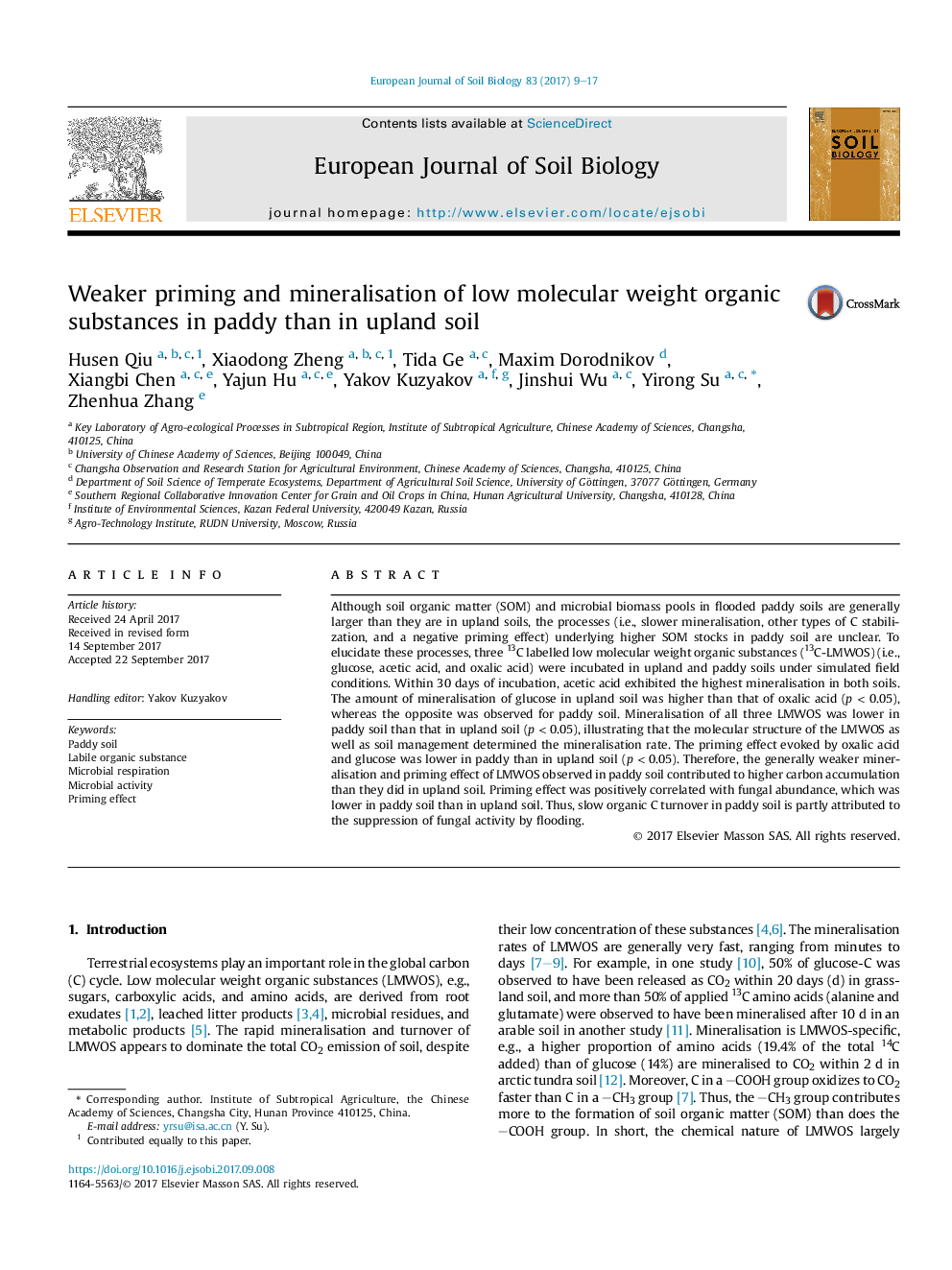| کد مقاله | کد نشریه | سال انتشار | مقاله انگلیسی | نسخه تمام متن |
|---|---|---|---|---|
| 5744169 | 1618109 | 2017 | 9 صفحه PDF | دانلود رایگان |
- The mineralisation of acetic acid was larger than glucose and oxalic acid in paddy and upland soils.
- Due to the low organic carbon mineralisation and priming, carbon accumulation in paddy soil was higher than in upland soil.
- Carbon turnover in paddy soil was slow because reduced oxygen conditions suppress fungi.
Although soil organic matter (SOM) and microbial biomass pools in flooded paddy soils are generally larger than they are in upland soils, the processes (i.e., slower mineralisation, other types of C stabilization, and a negative priming effect) underlying higher SOM stocks in paddy soil are unclear. To elucidate these processes, three 13C labelled low molecular weight organic substances (13C-LMWOS) (i.e., glucose, acetic acid, and oxalic acid) were incubated in upland and paddy soils under simulated field conditions. Within 30 days of incubation, acetic acid exhibited the highest mineralisation in both soils. The amount of mineralisation of glucose in upland soil was higher than that of oxalic acid (p < 0.05), whereas the opposite was observed for paddy soil. Mineralisation of all three LMWOS was lower in paddy soil than that in upland soil (p < 0.05), illustrating that the molecular structure of the LMWOS as well as soil management determined the mineralisation rate. The priming effect evoked by oxalic acid and glucose was lower in paddy than in upland soil (p < 0.05). Therefore, the generally weaker mineralisation and priming effect of LMWOS observed in paddy soil contributed to higher carbon accumulation than they did in upland soil. Priming effect was positively correlated with fungal abundance, which was lower in paddy soil than in upland soil. Thus, slow organic C turnover in paddy soil is partly attributed to the suppression of fungal activity by flooding.
Journal: European Journal of Soil Biology - Volume 83, NovemberâDecember 2017, Pages 9-17
